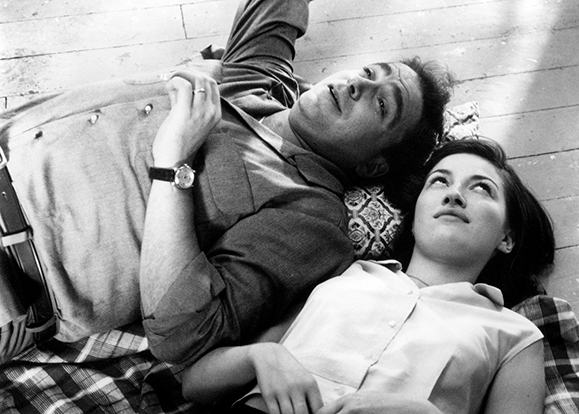Starring Michael Rispoli, Kelly MacDonald, and Kevin Conway. Written and directed by Raymond De Felitta. Lion’s Gate Films.
℘℘℘
In the tradition of films as diverse as Saturday Night Fever and Working Girl comes Two Family House, a charming movie about a blue collar guy who wants a little bit more than his drab background offers.
Just don’t go to this movie expecting a great portrait of the Irish in America. Or for that matter, the most convincing Irish accents.
But Two Family House did nab the coveted Audience Award at this year’s Sundance Film Festival, and is one of the more anticipated independent movies of the season.
Set on Staten Island (New York City’s long-suffering “forgotten borough”) in the 1950s, Two Family House chronicles decent factory worker Buddy Visalo (character actor Michael Rispoli, in what is being pushed as a breakout role).
Buddy once had a great shot at a singing career, when TV legend Arthur Godfrey heard him perform during World War II. But Buddy’ s traditional wife (Kathy Narducci) wanted him to settle down, rather than risk failure. Buddy’s opportunity instead went to crooner Julius La Rosa. “That coulda been me,” Buddy laments – echoing Irish-boxer-turned-thug Marlon Brando in On the Waterfront: “I coulda been a contender.”
When Buddy gets the bright idea to purchase a big old house and convert it into a tavern, with himself as the main attraction, his wife allows him to indulge himself – knowing Buddy will eventually fail, like always.
Buddy’s house, however, comes with tenants Jim O’Neary and his very pregnant wife Mary, from the auld sod. Jim (played by American actor Kevin Conway) is an insufferable, abusive drunk. Mary (Glaswegian Kelly MacDonald) does an update of Maureen O’Hara, snapping wildly at both her hubby and Buddy, in a breathless brogue.
The O’Nearys refuse to vacate the premises. Buddy goes to his pals wondering what to do. One of them (Vincent Pastore, “Big Pussy” of The Sopranos) is hell bent on breaking the record for the number of times “mick” can be said on screen. (As in, “You know the micks, they always want credit but never pay up.”)
But when Buddy forces the situation, Mary has her baby – which comes with a big surprise, sending Jim O’Neary away for good.
All of this is funny enough, if you don’t mind watching caricatures (based to some degree on reality) of Irish and Italian Americans. (Also be prepared for a large dose of racism.)
Two Family House warms up when it becomes clear that Buddy – wracked by guilt, fed up with his henpecking wife – is falling in love with Mary.
MacDonald settles into her role as the youthful, beset-upon Mary nicely, after an abrasive intro. Watching Mary struggle as she orders food and wine from an Italian deli is a tasty bit of comedy.
Still, while it has the good qualifies of similar movies (one also can’t help but think of the Ernest Borgnine classic Marty, or more recently A Bronx Tale), Two Family House is hampered by similar drawbacks. It’s a long (one could argue anti-Irish/anti-Italian) tradition in American novels and movies to depict such ethnic neighborhoods as so backward that one enlightened inhabitant (Buddy, in this case) must get out or die. Even Irish-Americans like James T. Farrell, in his 1930s Studs Lonigan novels, sometimes fell into this trap. (Most recently, check out Spike Lee’s film Summer of Sam and his, uh, indelicate presentation of Italian-Americans in the Bronx.)
It’s not that Two Family House doesn’t capture troubling undercurrents that exist in this community. But if these enclaves are as suffocating as they are so often depicted, one wonders how so many inhabitants have gone on to success in America.
Anyway, that gets away from what is best about Two Family House. Shot entirely on location (in Staten Island, as well as Bayonne, New Jersey), director De Felitta’s eye for detail is as good as his ear is for dialogue. His evocation of the 1950s is remarkable, given that no sets were recreated. After a summer of dull whiz-bang smash-’em-ups, Two Family House is that rare thing – a mature, emotional story. ♦


Leave a Reply